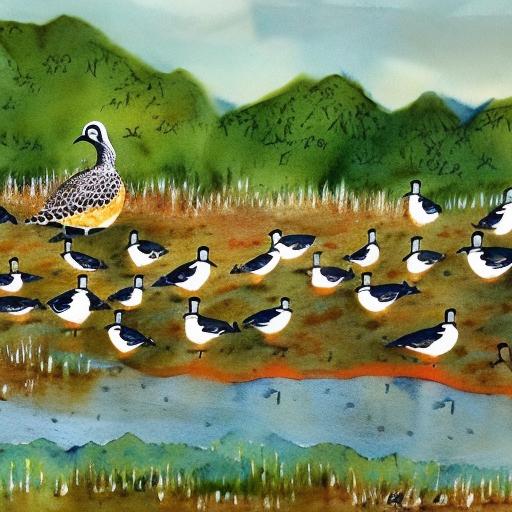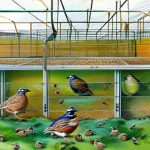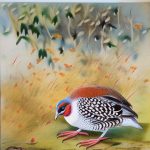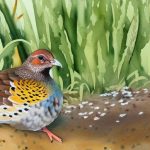King quails, also known as button quails, are small, ground-dwelling birds that are popular among aviculturists for their colorful plumage and charming personalities. Breeding season for king quails typically occurs during the warmer months, from spring to early autumn, when the days are longer and the temperatures are higher. During this time, male king quails become more vocal and display courtship behaviors to attract a mate. Breeding season is an exciting time for bird enthusiasts, as it offers the opportunity to witness the natural behaviors of these fascinating birds and potentially raise a new generation of king quails.
During breeding season, it is important for breeders to provide the appropriate conditions and care to support the mating, nesting, and hatching processes. This includes creating a suitable environment for courtship and nesting, monitoring the health and behavior of the birds, and ensuring proper nutrition and care for the eggs and chicks. Understanding the signs of breeding season, mating behaviors, and the challenges that may arise during this time is essential for successful king quail breeding. In this article, we will explore the various aspects of king quail breeding season, from the signs of breeding readiness to caring for the eggs and chicks, as well as tips for overcoming challenges and ensuring a successful breeding experience.
Key Takeaways
- King quails typically breed during the warmer months, with breeding season typically starting in spring and lasting through summer.
- Signs of breeding season in king quails include increased vocalization, courtship displays, and the appearance of mating behavior such as chasing and mounting.
- During nesting and mating behavior, male king quails will often perform a “tidbitting” display to attract females, and pairs will engage in preening and allopreening behaviors.
- It’s important to provide a well-balanced diet, clean nesting materials, and a stress-free environment for king quails during breeding season to ensure successful breeding and healthy offspring.
- Incubation of king quail eggs typically lasts around 17 days, and it’s important to provide a safe and warm environment for the eggs to hatch successfully. Additionally, chicks should be provided with a proper diet and care after hatching.
Signs of Breeding Season in King Quails
Breeding season in king quails is often signaled by changes in behavior and physical appearance. Male king quails become more vocal during this time, emitting distinctive calls to attract females and establish their territory. They may also engage in courtship displays, such as puffing up their feathers, bobbing their heads, and performing a “dance” to impress potential mates. Female king quails, on the other hand, may become more receptive to the advances of males, displaying a heightened interest in nesting and laying eggs.
In addition to behavioral changes, breeders can also observe physical signs of breeding readiness in king quails. Male king quails may develop brighter and more vibrant plumage during breeding season, as they strive to appear more attractive to potential mates. Female king quails may also exhibit changes in their physical appearance, such as a fuller and rounder abdomen as they prepare to lay eggs. By closely monitoring the behavior and appearance of their king quails, breeders can identify the signs of breeding readiness and prepare for the nesting and mating behaviors that will follow.
Nesting and Mating Behavior of King Quails
Once the signs of breeding readiness are observed in king quails, breeders can expect to witness nesting and mating behaviors as the birds prepare to reproduce. Male king quails will continue their courtship displays, often following females closely and engaging in vocalizations and displays to gain their attention. The male may also present nesting materials to the female as a way of demonstrating his suitability as a mate. If the female is receptive, she will begin to explore potential nesting sites within the aviary or enclosure.
Nesting behavior in king quails typically involves the female selecting a suitable location for laying her eggs. This may include areas with soft bedding material, such as hay or shredded paper, where she can create a shallow depression to hold her eggs. Once the nesting site is chosen, the female will lay a small clutch of eggs over several days, with each egg being deposited in the nest and covered with additional nesting material. The male may continue to court the female during this time, providing food and protection as she tends to her eggs. Understanding these nesting and mating behaviors is crucial for breeders to provide a supportive environment for successful egg-laying and incubation.
Caring for King Quails During Breeding Season
As king quails progress through the breeding season, it is important for breeders to provide attentive care to support the health and well-being of their birds. This includes ensuring that the aviary or enclosure is kept clean and free from potential hazards that could disrupt the nesting process or harm the eggs. Additionally, providing a balanced diet rich in protein, vitamins, and minerals is essential for supporting the reproductive health of king quails during breeding season.
Breeders should also monitor the behavior of their king quails closely, looking for any signs of stress or aggression that could indicate problems within the mating pair or group. It is important to provide ample space for nesting and privacy for the birds to reduce stress and encourage natural behaviors. Additionally, maintaining a stable environment with appropriate lighting and temperature conditions can help support successful breeding and egg incubation. By providing attentive care and monitoring the well-being of their king quails, breeders can help ensure a positive breeding experience for their birds.
Incubation and Hatching of King Quail Eggs
After the female king quail has laid her clutch of eggs, she will begin the process of incubating them to encourage hatching. Incubation typically lasts for around 16-18 days, during which time the female will diligently sit on her eggs to keep them warm and protected. It is important for breeders to provide a quiet and undisturbed environment during this critical period to minimize stress on the nesting female.
Once the eggs have completed the incubation period, they will begin to hatch, with the chicks emerging over a period of several days. Newly hatched king quail chicks are precocial, meaning they are born with their eyes open and are able to move around shortly after hatching. Breeders should provide a safe and warm environment for the chicks to ensure their survival during this vulnerable stage. This may include supplemental heat sources, such as heat lamps or heating pads, as well as access to fresh water and high-quality chick starter feed. By understanding the incubation and hatching process of king quail eggs, breeders can take proactive steps to support the health and development of the newly hatched chicks.
Challenges and Considerations for Breeding King Quails
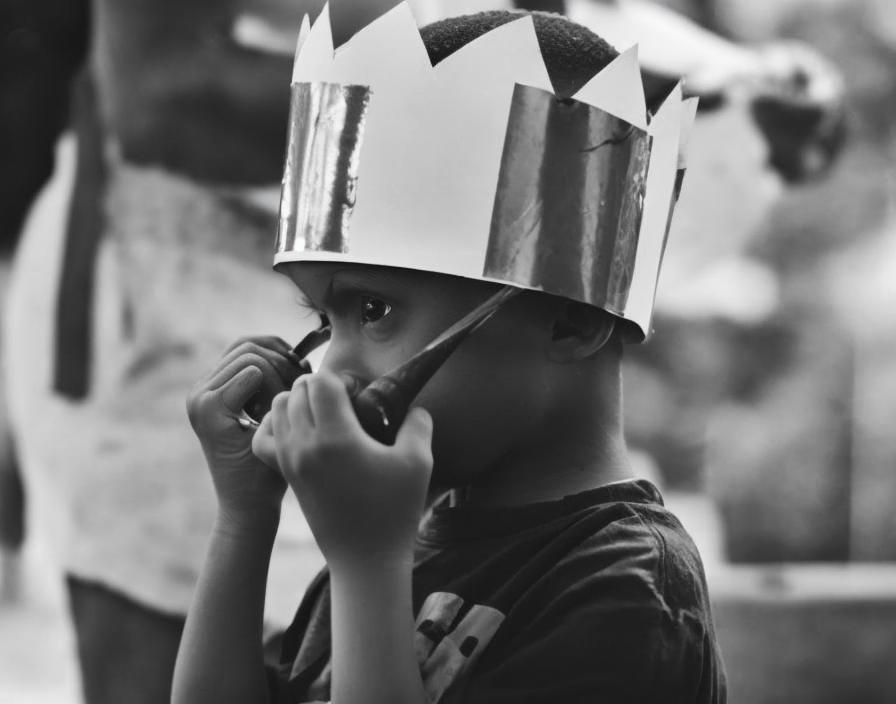
While breeding king quails can be a rewarding experience, it also comes with its own set of challenges and considerations that breeders must be prepared to address. One common challenge is ensuring successful mating and egg fertilization, particularly if there are multiple males within an aviary or enclosure. Breeders may need to carefully monitor mating behaviors and consider separating pairs or groups if aggression or competition becomes problematic.
Another consideration for breeding king quails is managing broodiness in female birds. Some female king quails may become excessively broody, leading them to lay large clutches of eggs without adequate breaks between nesting cycles. This can lead to exhaustion and health issues for the female bird if not managed carefully by breeders. Providing opportunities for rest and limiting access to nesting materials can help mitigate broodiness in female king quails.
Additionally, breeders should be prepared for potential health issues or complications that may arise during breeding season, such as egg binding or infertility. It is important to have a working knowledge of common avian health concerns and access to veterinary care if needed. By considering these challenges and taking proactive measures to address them, breeders can increase their chances of success in breeding king quails.
Conclusion and Tips for Successful King Quail Breeding
In conclusion, breeding season for king quails offers an exciting opportunity for aviculturists to observe natural mating behaviors and potentially raise a new generation of these charming birds. By understanding the signs of breeding readiness, nesting and mating behaviors, and providing attentive care throughout the breeding process, breeders can support successful egg-laying, incubation, and chick rearing. However, it is important to be mindful of potential challenges such as mating competition, broodiness, and health issues that may arise during breeding season.
To ensure successful king quail breeding, breeders should provide a suitable environment for courtship and nesting behaviors, monitor the health and behavior of their birds closely, and be prepared to address any challenges that may arise. Additionally, seeking out resources such as avian health information and connecting with experienced breeders can provide valuable support and guidance throughout the breeding process. With careful attention to these considerations and proactive care for their birds, breeders can enjoy a rewarding experience in breeding king quails while contributing to the conservation of these captivating avian species.
During the king quail breeding season, it’s essential to provide a suitable environment for these small birds. If you’re looking for tips on creating the perfect coop for your quails, check out Poultry Wizard’s article on “What Kind of Coop is Best for Chickens.” This informative piece offers valuable insights that can be applied to creating a comfortable and secure space for your king quails during their breeding season. Whether you’re a seasoned breeder or new to raising quails, this article provides practical advice on coop design and functionality. (source)
FAQs
What is the breeding season for king quails?
The breeding season for king quails typically occurs during the warmer months, from spring to early autumn.
How do king quails prepare for breeding season?
During the breeding season, male king quails will become more vocal and display courtship behaviors such as puffing up their feathers and performing a “bobbing” dance to attract females.
How do king quails build their nests for breeding?
Female king quails will typically build their nests on the ground, using materials such as grass, leaves, and feathers to create a cozy and secure environment for their eggs.
How many eggs do king quails lay during the breeding season?
Female king quails can lay anywhere from 4 to 12 eggs in a clutch, with an average of 6 to 8 eggs being common during the breeding season.
How long does it take for king quail eggs to hatch?
King quail eggs typically take around 16 to 18 days to hatch, with the female being the primary caretaker of the eggs during this time.
What should be done to ensure successful breeding of king quails?
To ensure successful breeding of king quails, it is important to provide a suitable nesting area, a balanced diet, and a stress-free environment for the birds during the breeding season. Additionally, monitoring the birds for any signs of illness or aggression is crucial for successful breeding.
Meet Walter, the feathered-friend fanatic of Florida! Nestled in the sunshine state, Walter struts through life with his feathered companions, clucking his way to happiness. With a coop that’s fancier than a five-star hotel, he’s the Don Juan of the chicken world. When he’s not teaching his hens to do the cha-cha, you’ll find him in a heated debate with his prized rooster, Sir Clucks-a-Lot. Walter’s poultry passion is no yolk; he’s the sunny-side-up guy you never knew you needed in your flock of friends!

